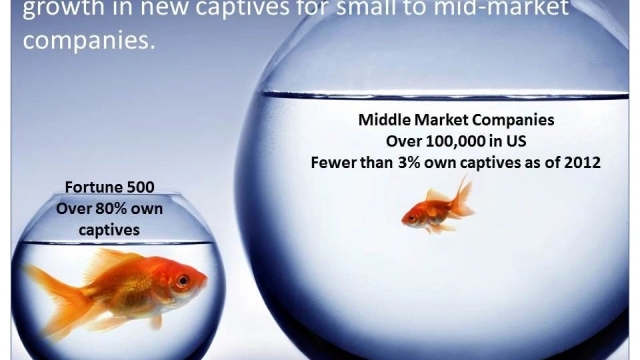Captive insurance, also known as microcaptive insurance, has emerged as a powerful tool for businesses to manage risk and gain more control over their insurance programs. With the introduction of the IRS 831(b) tax code, businesses now have the opportunity to form their own captive insurance companies, opening up a world of possibilities and potential benefits. In this article, we will explore the concept of captive insurance, its advantages, and how it can be harnessed to unlock new opportunities for businesses of all sizes. Whether you’re a small business owner looking to mitigate risks or a larger corporation seeking more efficient risk management strategies, the world of captive insurance holds ample potential to transform the way you safeguard your assets. So, let’s delve deeper into the world of captive insurance and discover how it could be the missing piece in your risk management puzzle.
Captive Insurance
Section 1: Understanding Captive Insurance

In this section, we will delve into the concept of captive insurance and its significance in the financial world.
Captive insurance, also known as microcaptive insurance, refers to a method of self-insuring where a company creates its own insurance subsidiary to cover their risks. This approach allows the company to have more control over their insurance coverage and potentially gain financial advantages. One commonly used tax code for captive insurance companies is 831(b), which enables smaller captives to enjoy certain tax benefits.
The main purpose of captive insurance is to provide coverage for risks that may not be adequately addressed by traditional insurance providers. By creating their own captive insurance companies, businesses can tailor their coverage specifically to their unique needs, rather than relying solely on standardized insurance policies. This level of customization can result in greater cost savings and improved risk management strategies.
In recent years, captive insurance has gained popularity among various industries, as it offers a viable alternative to traditional insurance options. By leveraging the strategic advantages of captive insurance, businesses can protect themselves from unforeseen risks, save on insurance costs, and gain greater control over their overall risk portfolio. As we move forward, it is important to explore the intricacies of captive insurance and its potential benefits in more detail.
Section 2: Benefits of IRS 831(b) Tax Code
Captive insurance, particularly under the IRS 831(b) tax code, offers a range of benefits that can be advantageous for businesses. Here we explore three key advantages of utilizing this tax code.
Firstly, the 831(b) tax code allows qualifying businesses to enjoy favorable tax treatment. Under this provision, profits generated by the captive insurance company can be subject to significantly reduced tax rates. This can result in substantial tax savings for businesses, freeing up capital for other investments and operational needs.
Beyond tax advantages, captive insurance also empowers businesses to gain more control over their insurance programs. By establishing their own captive insurance company, businesses can tailor coverage to their specific needs, ensuring that they are appropriately protected. This level of customization can lead to more comprehensive coverage and improved risk management strategies.
Furthermore, captive insurance creates the potential for businesses to achieve long-term cost savings. By retaining and managing a portion of their own risk through a captive, businesses can potentially reduce premium costs and decrease dependency on traditional insurance providers. This increased control over insurance expenses can contribute to improved cash flow and profitability over time.
In summary, the IRS 831(b) tax code presents businesses with the opportunity to unlock several key benefits. Lower tax rates, enhanced flexibility in insurance coverage, and the potential for long-term cost savings make captive insurance an appealing option for forward-thinking organizations.
Section 3: Harnessing the Power of Microcaptives
In the world of captive insurance, microcaptives have emerged as a powerful tool. These smaller, specialized insurance companies can offer unique benefits to businesses seeking to manage their risks effectively. Let’s take a closer look at the advantages that microcaptives bring to the table.
First and foremost, microcaptives provide businesses with greater control over their risk management strategies. By forming their own captive insurance company, businesses can design customized policies specifically tailored to their unique needs and level of risk exposure. This level of control allows businesses to optimize coverage while reducing costs, as they no longer have to rely solely on traditional insurance providers.
Another key advantage of microcaptives is the potential tax benefits they can offer under the IRS 831(b) tax code. This provision allows certain small or "micro" captives to elect a tax exemption on underwriting income. By meeting the qualifying criteria, businesses can enjoy certain tax advantages, making microcaptives an attractive option for companies looking to maximize their financial efficiency.
Additionally, microcaptives can provide businesses with increased flexibility in managing their financial resources. By retaining a portion of the underwriting profits, businesses can accumulate capital over time, which can be used to fund potential losses and future claims. This capital accumulation allows businesses to build a reserve fund, providing them with more stability and control over their insurance needs.
In conclusion, microcaptives offer businesses the opportunity to better harness the power of captive insurance. With greater control over risk management strategies, potential tax benefits, and increased financial flexibility, microcaptives can be a game-changer for businesses seeking effective risk mitigation solutions. By exploring the potential of microcaptives, businesses can unlock a range of benefits in managing their insurance needs.



